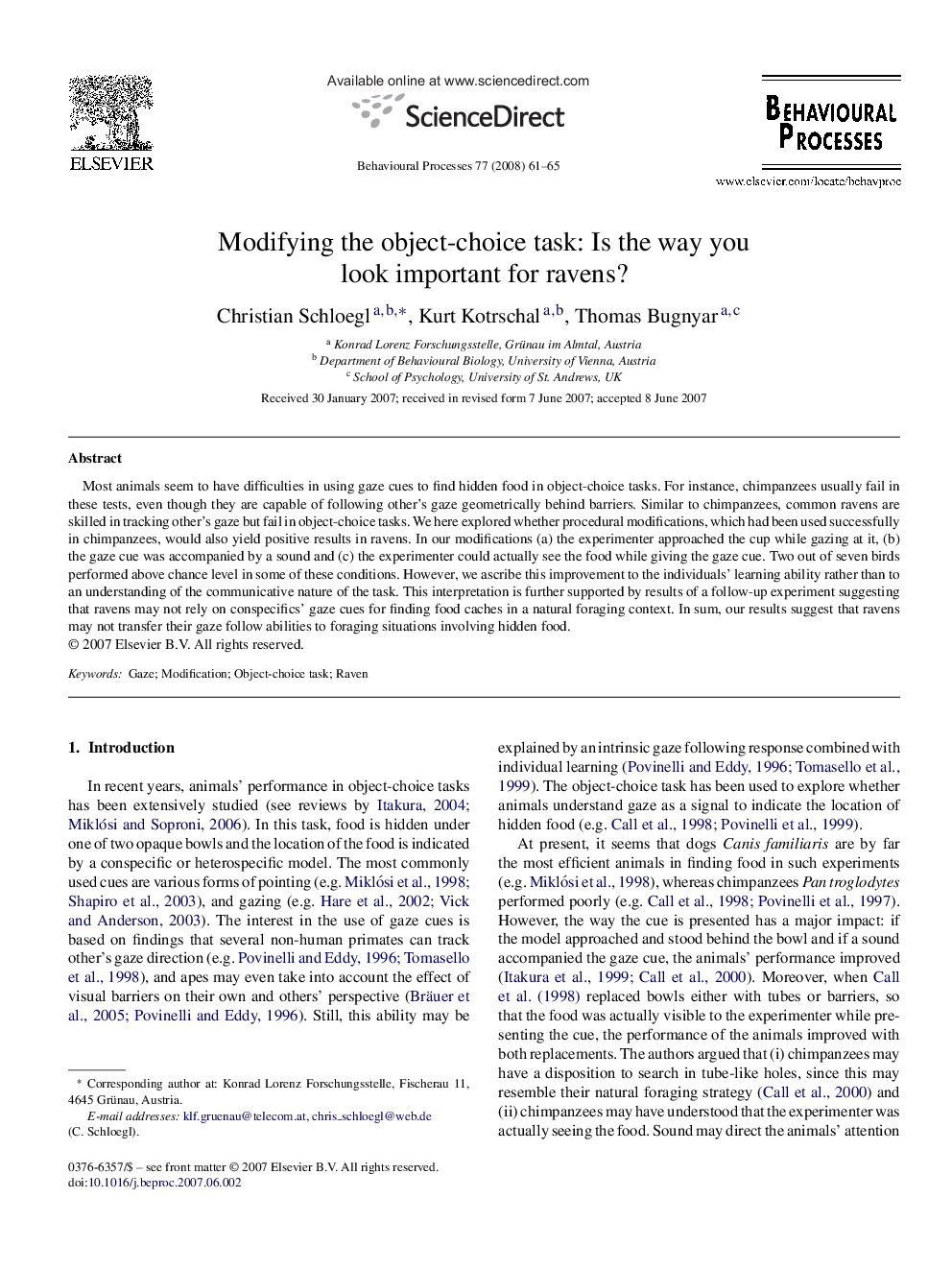| Article ID | Journal | Published Year | Pages | File Type |
|---|---|---|---|---|
| 2427703 | Behavioural Processes | 2008 | 5 Pages |
Most animals seem to have difficulties in using gaze cues to find hidden food in object-choice tasks. For instance, chimpanzees usually fail in these tests, even though they are capable of following other's gaze geometrically behind barriers. Similar to chimpanzees, common ravens are skilled in tracking other's gaze but fail in object-choice tasks. We here explored whether procedural modifications, which had been used successfully in chimpanzees, would also yield positive results in ravens. In our modifications (a) the experimenter approached the cup while gazing at it, (b) the gaze cue was accompanied by a sound and (c) the experimenter could actually see the food while giving the gaze cue. Two out of seven birds performed above chance level in some of these conditions. However, we ascribe this improvement to the individuals’ learning ability rather than to an understanding of the communicative nature of the task. This interpretation is further supported by results of a follow-up experiment suggesting that ravens may not rely on conspecifics’ gaze cues for finding food caches in a natural foraging context. In sum, our results suggest that ravens may not transfer their gaze follow abilities to foraging situations involving hidden food.
